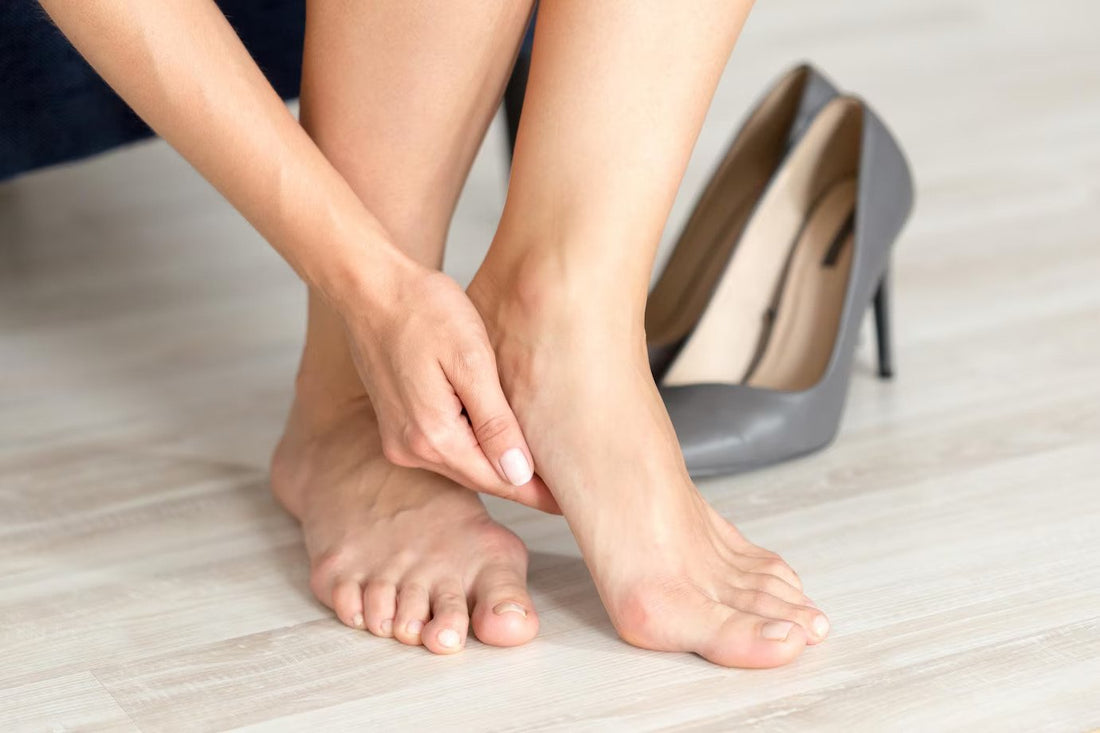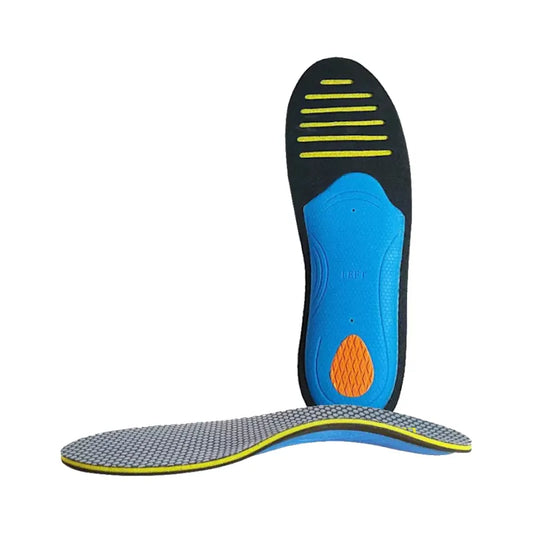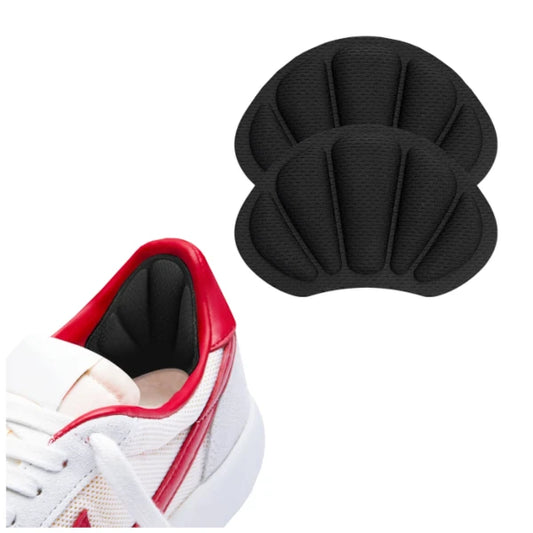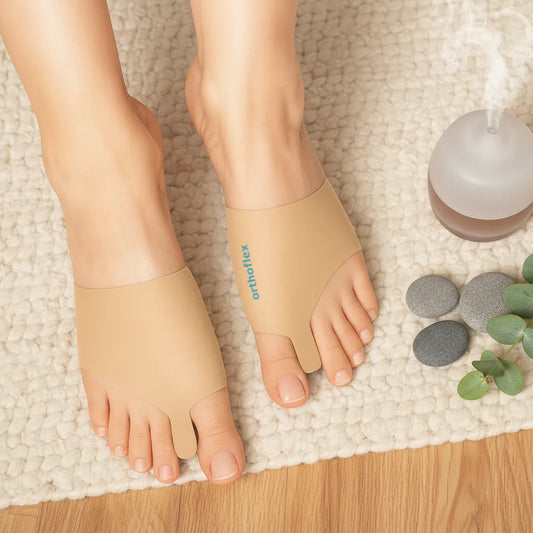
Does apple cider vinegar remove bunions?
Share
Bunions and natural treatments
If you're experiencing bunions, you may have come across claims suggesting that apple cider vinegar can assist in eliminating them. However, it is essential to determine the accuracy of these claims.

Bunions, medically referred to as hallux valgus, are a frequently encountered foot condition known for causing considerable discomfort. They manifest as an anomalous bony growth on the outer side of the big toe, resulting from continuous pressure on the joint, causing it to shift inwardly towards the other toes. Numerous home remedies and natural treatments assert their ability to alleviate foot pain and address bunions, and among these, apple cider vinegar has gained significant popularity.
Causes and symptoms
Bunions are commonly believed to have a hereditary basis. Factors such as flat feet, excessively flexible ligaments, and an irregular bone structure are often associated with the development of bunions. Symptoms indicating the presence of a bunion may include the redness, irritation and thickness of the skin on the side of your big toe, alignment of the big toe towards the other toes, formation of calluses, persistent or intermittent aches and pains in the feet and Impaired mobility of the big toe.
The discomfort caused by bunions can make it challenging to engage in regular activities and move around comfortably.
Keeping this in mind, individuals will search for an easy and quick way to reduce pain and inflammation.
What can I do to eliminate or reduce bunions?
Completely eradicating a bunion without surgical intervention is not achievable. However, there are various non-surgical methods commonly employed to prevent the worsening of symptoms. These conservative approaches primarily involve making changes in footwear, such as opting for shoes with a wider toe box. Additionally, maintaining a healthy weight and utilizing foot orthotics like shoe inserts and pads can help alleviate symptoms without resorting to surgery.
Nevertheless, there is ongoing discussion regarding the effectiveness of home remedies in reducing pain and inflammation associated with bunions.
Does apple cider actually eliminate bunions?
Apple cider vinegar has gained popularity as a traditional home remedy with a history spanning centuries, utilized for the treatment of various health ailments. It contains acetic acid, which is believed to possess anti-inflammatory properties that can potentially alleviate joint pain and inflammation.
However, it is important to clarify that apple cider vinegar cannot eliminate bunions. While there are numerous anecdotal reports on the internet suggesting its effectiveness, there is a lack of scientific evidence to support the claim that vinegar can treat bunions or reverse their progression. Nonetheless, due to its anti-inflammatory properties, this natural solution may provide some relief for the discomfort associated with bunions.

It's crucial to acknowledge that individuals' bodies can respond differently to remedies, and what may work for one person might not work for another.
However, apple cider vinegar can still offer benefits for foot health in other aspects. Utilizing this home remedy for foot soaking purposes can aid in reducing foot odor and combating fungal infections due to its antibacterial properties.
Other alternatives
If you tried apple cider vinegar and it was not helpful, there are other home remedies alternatives. An effective method for relieving bunion pain is to soak your feet in warm water mixed with Epsom salt. This combination can help alleviate swelling and inflammation associated with bunions. It is recommended to soak your feet for a minimum of 20 minutes and repeat this process two to three times per week.

Additionally, using ice packs or engaging in ice baths can aid in reducing swelling and inflammation. Wrap ice packs in a towel and apply them to the bunion for approximately 15 to 20 minutes.
It is important to note that these methods will not cure or reduce the size or shape of a bunion. However, they can provide significant relief, improve mobility, and potentially slow down or halt the progressive shifting of the big toe. This can be considered a noteworthy accomplishment in managing the condition.
If conservative measures fail to effectively address your bunion, surgery might be a viable option worth considering.
Conclusion
In conclusion, while apple cider vinegar may provide some relief by reducing pain and inflammation, it is not a solution for reducing or eliminating a bunion. Surgery remains the only definitive method to "cure" a bunion by making it disappear. However, it is important to note that surgery may not always be the optimal solution, and its purpose may not be solely to remove the visible bump. Conservative treatments aimed at relieving symptoms should be considered as the initial approach before considering surgery.
Author Bio

Inês Pinheiro
Certified Physiotherapist for Shoulder and Knee Injuries
Inês is a skilled physical therapist with a special interest and extensive experience in working with athletes, specifically football players and also neurologic patients.
References
- Gopal, J. et al. (2017) ‘Authenticating apple cider vinegar’s home remedy claims: Antibacterial, antifungal, antiviral properties and cytotoxicity aspect’, Natural Product Research, 33(6), pp. 906–910. doi:10.1080/14786419.2017.1413567.
- Seeking a Cure for Bunions? Let Us Tell You What We Know. Massapequa Podiatry Associates, P.C. Available at: https://www.cfoxdpm.com/
- Arakelyan, Hayk and Beybutyan, Astghik (2019) Apple Cider Vinegar: Health Benefits and unwanted effects.
- Tsoupras, A. et al. (2021) ‘Anti-inflammatory and anti-platelet properties of lipid bioactives from Apple Cider by-products’, Molecules, 26(10), p. 2869. doi:10.3390/molecules26102869.
- Apple Cider Vinegar for Arthritis: Will It Help? (2022) CreakyJoints. Available at: https://creakyjoints.org/.






